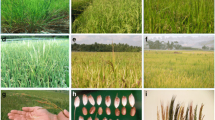Abstract
The recovery plan for the U.S. federally endangered Xyris tennesseensis calls for increasing the size of some existing populations and establishing new ones in suitable sites. As a contribution to this goal, we investigated seed dormancy and germination and attempted to propagate the species in non-native soil. Freshly matured seeds were conditionally dormant and germinated to 0, 0, 92, 91, and 74% in light after two weeks at 15/6, 20/10, 25/15, 30/15, and 35/20°C, respectively. Seeds retained the ability to germinate to 80–100% in light at 25/15 and at 30/15°C throughout a 39.5-month period of burial in an unheated greenhouse. Following the first year of burial, however, germination at 20/10°C showed an annual cycle, with 79–86% of the seeds germinating in spring but only 0–1% in autumn Under natural temperature regimes, seeds sown on native soil germinated from mid-May to early August. Seeds had an absolute light requirement for germination, and those incubated at 30/15°C required six days of light (14-hour daily photoperiod) to subsequently germinate in darkness. The species has a small persistent soil seed bank. Although no dormancy-breaking treatments are required for seeds to germinate to high percentages in light at high temperatures, growing seedlings/juveniles in non-native soil is very difficult. Seeds germinated during summer when sown on both inorganic and black organic soils, with and without the addition of lime, but few seedlings lived for more than one month. Only two of 125 juveniles lived for two months after they were transplanted from native soil into black organic soil. One strategy to increase the number of plants at a site may be to remove litter and sow seeds on the surface of undisturbed soil in late spring-summer.
Similar content being viewed by others
Literature Cited
Baskin, C. C., J. M. Baskin, and E. W. Chester. 2000. Effect of flooding on the annual dormancy cycle and on germination of seeds of the summer annual Schoenoplectus purshianus (Cyperaceae). Quatic Botany 67:109–116.
Baskin, J. M. and C. C. Baskin. 1971. The possible ecological significance of the light requirement for germination in Cyperus inflexus. Bulletin of the Torrey Botanical Club 98:25–33.
Baskin, J. M. and C. C. Baskin. 1985. The annual dormancy cycle in buried weed seeds: a continuum. BioScience 35:492–498.
Keddy, P. A. and A. A. Reznicek. 1982. The role of seed banks in the persistence of Ontario’s coastal plain flora. American Journal of Botany 69:13–22.
Kral, R. 1978. A new species of Xyris (Sect. Xyris) from Tennessee and northwestern Georgia. Rhodora 80:444–447.
Kraus, J. E., M. D. G. Sajo, C. L. Dias-Leme, and M. D. G. L. Wanderley. 1994. Aspectos morfológicos do dessenvolvimento pós-seminal em espécies de Xyris L. (Xyridaceae). Hoehnea 21: 29–38.
Quarterman, E. and R. L. Powell. 1978. Potential ecological/geological natural landmarks of the Interior Low Plateaus. U.S. Department of the Interior, Washington, DC, USA.
Shipley, B. and M. Parent. 1991. Germination responses of 64 wetland species in relation to seed size, minimum time to reproduction and seedling relative growth rate. Functional Ecology 5:111–118.
Thompson, K., J. Bakker, and R. Bekker. 1997. The Soil Seed Banks of North West Europe: Methodology, Density and Longevity. Cambridge University Press, Cambridge, UK.
USFWS. 1993. Technical draft recovery plan for Tennessee yelloweyed gras (Xyris tennesseensis Kral). U.S. Fish and Wildlife Service, Jackson, MS, USA.
Vegis, A. 1964. Dormancy in higher plants. Annual Review of Plant Physiology 15:185–224.
Walck, J. L., J. M. Baskin, and C. C. Baskin. 1999. Roles of succession, light, nutrients and disturbance on population vigor and maintenance of the rare, plant Solidago shortii (Asteraceae). Plant Ecology 145:133–147.
Wallis, A. L., Jr. (comp. and ed.). 1977. Comparative climatic data through 1976. U.S. Department of Commerce, National Oceanic and Atmospheric Administration, Environmental Data Service. National Climatic Center, Asheville, NC, USA.
Wilson, S. D., P. A. Keddy, and D. L. Randall. 1985. The distribution of Xyris difformis along a gradient of exposure to waves: an experimental study. Canadian Journal of Botany 63:1226–1230.
Author information
Authors and Affiliations
Corresponding author
Rights and permissions
About this article
Cite this article
Baskin, C.C., Baskin, J.M. Seed germination and propagation of Xyris tennesseensis, a federal endangered wetland species. Wetlands 23, 116–124 (2003). https://doi.org/10.1672/0277-5212(2003)023[0116:SGAPOX]2.0.CO;2
Received:
Revised:
Accepted:
Issue Date:
DOI: https://doi.org/10.1672/0277-5212(2003)023[0116:SGAPOX]2.0.CO;2




